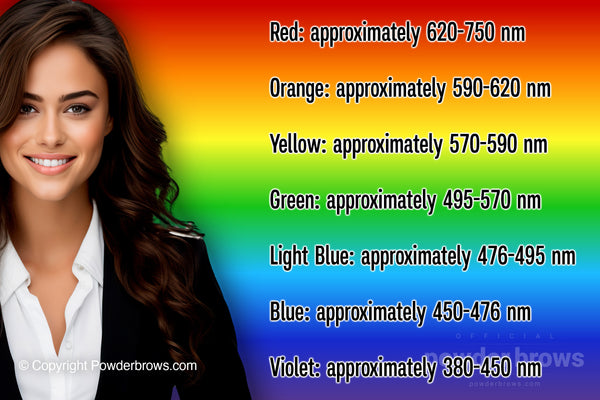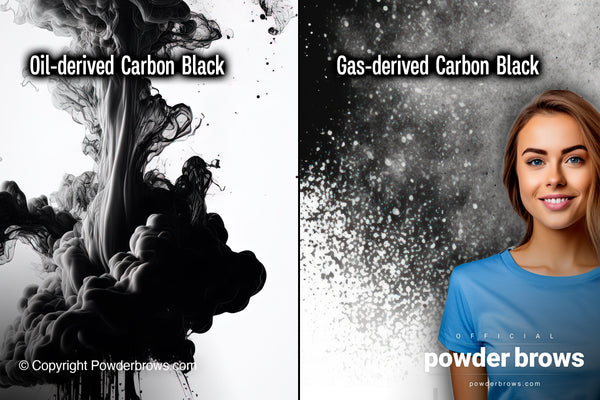Ease of Implantation and Skin pH: The Hydrocarbon Factor
At first glance, one might assume that smaller particles, like those of Channel Black (Black 6), would be easier to implant into the skin. This is not the case. Oil-based Furnace Black (Black 2), with its larger particles, tends to implant into the skin more efficiently in a single pass than gas-based Channel Black.
Why is this so? The answer lies in the chemical composition of the pigment and its compatibility with the skin's environment, particularly the pH. Smaller particles often necessitate more oxygen bonds for stability, making them less acidic. Since skin pH largely involves hydrogen bonds, pigments with larger particle sizes- rich in organic hydrocarbons that contain hydrogen bonds - integrate into the skin more easily. In other words, Black 2, with up to 55% hydrocarbon content, meshes better with the skin than Black 6, which contains just 19% hydrocarbons.
Larger particles can be easier to implant
Some experts have proposed theories suggesting that smaller particle sizes could make pigment implantation more challenging due to these pigments being less compatible with the skin's pH. While it's not accurate to claim that a high concentration of oxygen in smaller particles makes them more alkaline, tests have shown that many pigments with smaller particle sizes do indeed have a pH that is less compatible with the skin environment.
Conversely, although larger particles don't inherently possess more acidic properties due to their oxygen concentration, studies have found that many of them do have a pH that is more compatible with the skin. Specifically, these tests indicate that larger particle pigments often contain more functional groups that can donate or accept hydrogen ions. This compatibility with the skin's pH facilitates easier implantation.
Human Aspect of Implantation
In considering the practical implications of why pigments might turn "blue" once implanted in the skin, it's crucial to factor in the human element—the skill and experience of the artist performing the implantation.
When examined from this angle, oil-based Carbon Black, also known as "Black 2," poses a significant risk. This is because its chemical and physical properties make it extremely easy to implant into the skin. In the hands of an inexperienced or naive artist, this ease of implantation can lead to the introduction of an excessive amount of organic carbon into the skin layers.
The approach for implanting pigments containing Furnace Black must differ fundamentally from the strategy used for mineral pigments. Treating them the same could lead to disastrous outcomes. Specifically, the sheer volume of organic carbon that could be inserted into the skin layers becomes dangerously high when using oil-based Carbon Black.
In most instances, artists may inadvertently implant such a large quantity of carbon when using petroleum-based Carbon Black CI 77266 that the result appears more "blue" than if Channel Black with its smaller particles had been used. Due to its lesser compatibility with skin pH and its smaller particle size, gas-based Channel Black is a considerably safer choice. It is less likely to permit a comparable volume of carbon molecules to reach the dermal layers of the skin.
"Blue brows," the skin melanin and Fitzpatrick scale
When examining the interaction of skin melanin on the Fitzpatrick scale and the propensity for brow pigmentation to adopt a bluish hue, we find that individuals with Fitzpatrick skin types 4, 5, and 6 may experience this more frequently. The increased melanin in these skin types can influence the underlying tones of pigments used in brow treatments, often resulting in a cooler, blue-toned appearance.
A common method to counteract this effect involves integrating a magenta pigment into the color formula applied during the procedure. Magenta, with its red and pink undertones, can warm up the brow color, helping to neutralize the cooler blue tones that may emerge over time.
However, it's crucial to recognize that the issue of brows turning blue is fundamentally an optical phenomenon. This is attributed to the behavior of carbon-based molecules in the skin, which, when exposed to light, reflect wavelengths that we perceive as blue. By adding more pigment particles to the skin that can scatter light, we can indeed create an optical correction. This additional scattering can make the blue less perceptible, but it's essential to acknowledge that the reflective property of carbon particles themselves remains unchanged. The strategy does not alter the carbon's intrinsic tendency to reflect blue light but rather adds complexity to the way light is absorbed and scattered, thereby affecting the color we see.
Conclusion on Why Pigment Turns Blue
As we've established, there's no inherently "blue" pigment; it's a matter of optics. Channel Carbon Black, with its smallest particle size (90-100nm), has the capacity to reflect wavelengths in a manner that appears bluish or violet to the human eye.
However, this optical behavior must be understood in the context of human skin. The Tyndall effect comes into play here, as the blue wavelengths that are not absorbed by the skin become more pronounced. To understand why a pigment appears blue, we must consider the factors that create an environment conducive to this optical phenomenon.
The skin's pH level and the chemical properties of Furnace Black, also known as Black 2, which can contain over 50% hydrocarbons, are key factors. In the hands of an artist with limited experience, using Black 2 and employing an implantation technique similar to that used for mineral pigments becomes a recipe for generating a "blue" appearance in treatments like eyebrow or eyeliner pigmentation.










